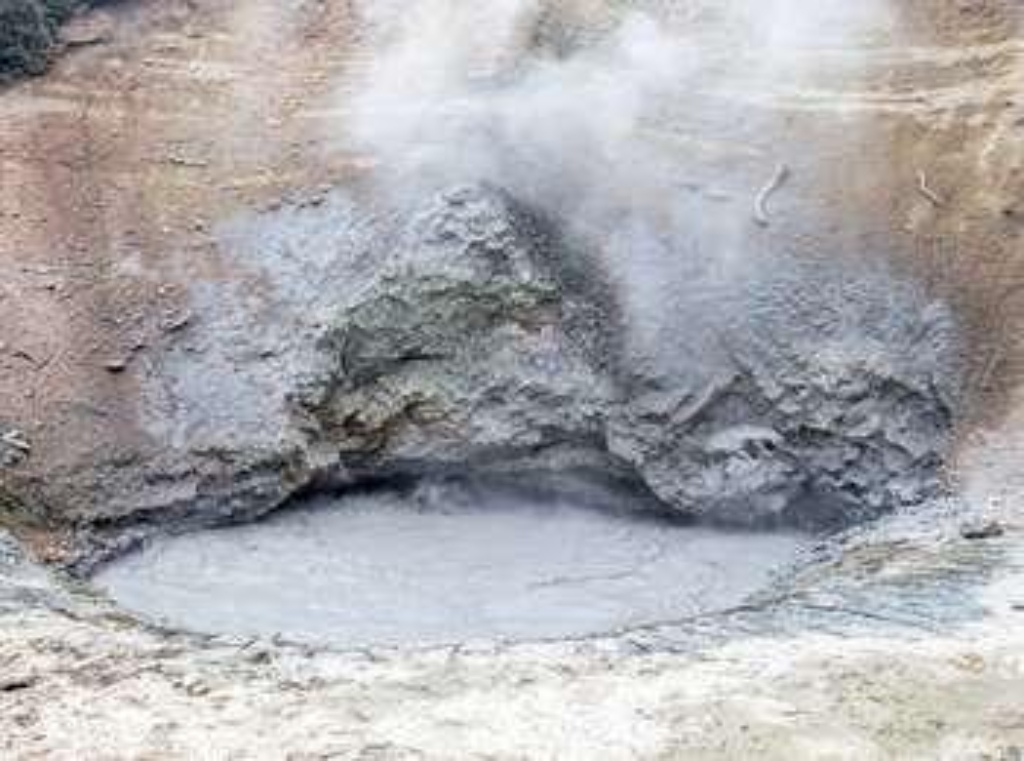
Early explorers to Yellowstone described this features as a “most repulsive and terrifying site.” It is a volcano-like cone, 30 by 30 feet high and wide (9 x 9 m) with mud that erupts and covers tall trees.
When Nathaniel P. Langford, the first superintendent of Yellowstone, visited in 1870, he saw “a seething, bubbling mass of mud.”
It is likely a violent eruption blew out the cone’s side, leaving the crater you see today. The water constantly undercuts the back wall and is rich in iron sulfides.
Mudpots
Mudpots are acidic features with a limited water supply. Some microorganisms use hydrogen sulfide, which rises from deep within the earth, as an energy source. They help convert the gas to sulfuric acid, which breaks down rock to wet clay mud and creates the area’s smell. The pungent odor of rotten eggs is caused by the hydrogen sulfide gas.
Various gases escape through the wet clay mud, causing it to bubble. Mudpot consistency and activity vary with the seasons and precipitation.
The Smell
Mudpots are acidic features with a limited water supply. Some microorganisms use hydrogen sulfide, which rises from deep within the earth, as an energy source. They help convert the gas to sulfuric acid, which breaks down rock to wet clay mud and creates the area’s smell. The pungent odor of rotten eggs is caused by the hydrogen sulfide gas.
Various gases escape through the wet clay mud, causing it to bubble. Mudpot consistency and activity vary with the seasons and precipitation.
Mud Volcano Area
The Mud Volcano area has many mudpots and hillsides strewn with trees cooked by steam. The hydrothermal features here are some of the most acidic in the park.
Mud Volcano is near the greatest uplift and sinking of the Yellowstone Caldera floor. Many faults converge here and earthquakes are common.
The areas surrounding the Mud Volcano vent and the other major vent near Old Faithful are called resurgent domes. Resurgent domes are active ground deformation, where the land moves up or down with the fluctuation of the magma chamber below. Scientists monitor these domes closely for information about ongoing volcanic activity.
Use Caution in Hydrothermal Areas
- Stay on boardwalks and designated trails.
- Hydrothermal water can severely burn you.
- Never run, push, or shove.
- Supervise children at all times.
- Do not scratch hydrothermal mats.
You are responsible for your safety.
Think safety, act safely. Yellowstone is a dangerous place.
Is there something we missed for this itinerary?
Itineraries across USA


















































